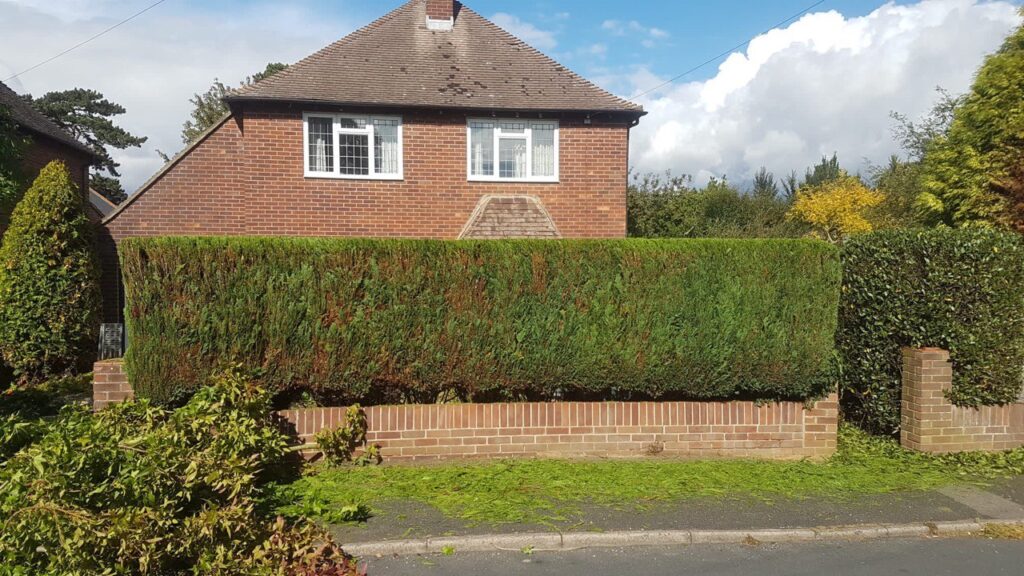High winds can cause significant damage to trees, often resulting in broken or fallen branches. For property owners in Portsmouth, Hampshire, understanding why trees lose branches during storms is essential for protecting both the trees themselves and surrounding areas. This article explores the causes of branch loss in high winds and offers guidance on how to minimise the risks through proper tree care.
The Science Behind Branch Loss in High Winds
Trees are designed to withstand various weather conditions, but high winds can push them beyond their limits. Several factors contribute to branch loss during storms:
1. Structural Weaknesses in the Tree
Branches may have inherent weaknesses due to improper growth patterns, disease, or past damage. These weak points are more likely to fail when exposed to the stress of strong winds.
2. Wind Force and Direction
High winds exert pressure on a tree’s canopy, causing branches to sway. When the force exceeds the branch’s tensile strength, it can snap or tear away. Gusty or erratic winds that change direction quickly can be particularly damaging.
3. Tree Species and Canopy Shape
Certain tree species are more prone to branch loss due to their growth characteristics. For example:
- Trees with dense canopies catch more wind, increasing the stress on branches.
- Brittle species, such as willow or poplar, are more likely to break under pressure.
4. Diseased or Dead Wood
Dead or diseased branches are structurally weaker and more likely to break in high winds. These branches lack the flexibility and strength needed to resist strong gusts.
5. Overloaded Branches
Branches that are overburdened with leaves, fruit, or ice become heavier, making them more susceptible to snapping in strong winds.
Risks Associated with Branch Loss
Falling branches pose several risks, including:
- Property Damage: Broken branches can damage roofs, vehicles, fences, or other structures.
- Safety Hazards: Large branches can cause injury to people or animals if they fall unexpectedly.
- Tree Health: The loss of significant branches can weaken a tree, making it more vulnerable to disease or further damage.
How to Minimise the Risk of Branch Loss
Proper tree care is crucial for reducing the likelihood of branch loss during storms. Here are some key steps to take:
1. Regular Tree Inspections
Have your trees inspected regularly by a professional tree surgeon. Inspections can identify structural weaknesses, deadwood, or signs of disease that may increase the risk of branch loss.
2. Pruning and Thinning
Pruning helps remove weak, dead, or overgrown branches, reducing the wind resistance of the canopy. Thinning the canopy allows wind to pass through more easily, minimising stress on the tree.
3. Strengthening Weak Branches
In some cases, tree surgeons can reinforce weak branches using cabling or bracing techniques. These supports provide additional stability and reduce the risk of breakage.
4. Tree Selection and Placement
When planting new trees, consider species that are well-suited to withstand local weather conditions. Ensure trees are planted in locations with sufficient space for their growth and away from structures or power lines.
5. Remove Dead or Diseased Wood
Promptly removing dead or diseased branches improves the overall health and stability of the tree, reducing the likelihood of damage during high winds.
The Importance of Professional Tree Surgery
While some preventative measures can be undertaken by property owners, professional expertise is essential for ensuring tree safety and health. At LM Tree Surgery Portsmouth, we specialise in identifying and addressing tree vulnerabilities, providing expert care tailored to the specific needs of trees in Portsmouth and the surrounding areas.
Conclusion
Trees lose branches in high winds due to factors such as structural weaknesses, wind pressure, and canopy density. Understanding these causes and taking proactive steps to maintain tree health can significantly reduce the risk of damage. For professional tree care services in Portsmouth, contact LM Tree Surgery Portsmouth today to ensure your trees are prepared to withstand the elements.
Call us on: 023 8235 3287
Click here to find out more about LM Tree Surgery Portsmouth
Click here to complete our contact form and see how we can help with your tree needs.

